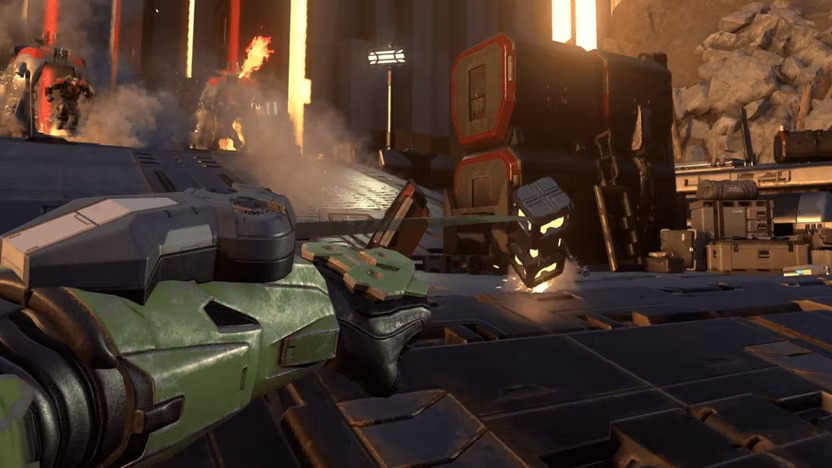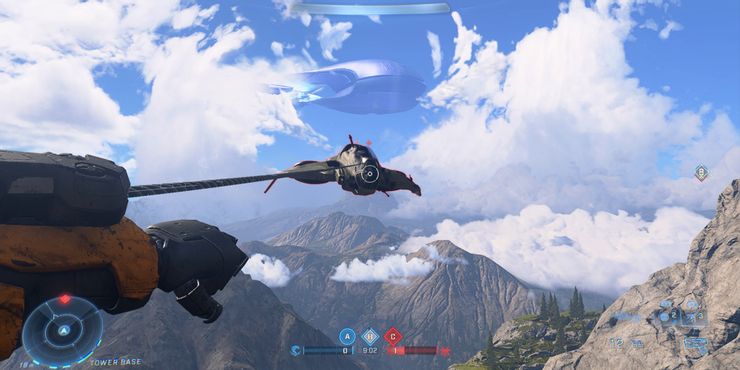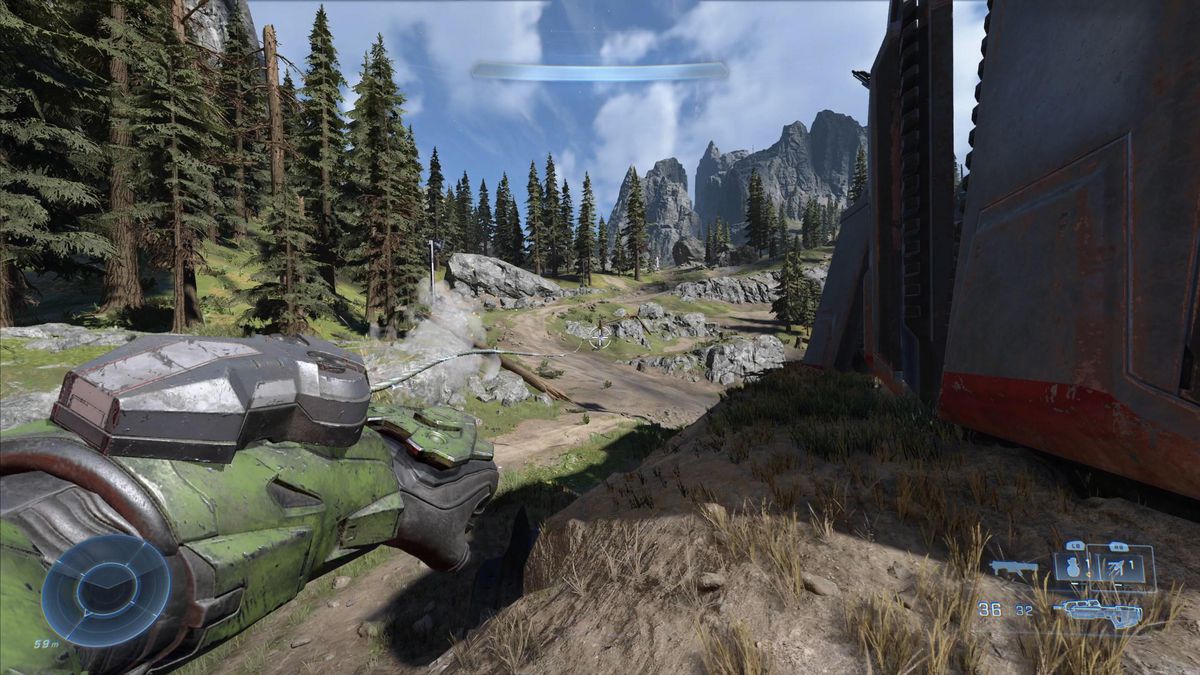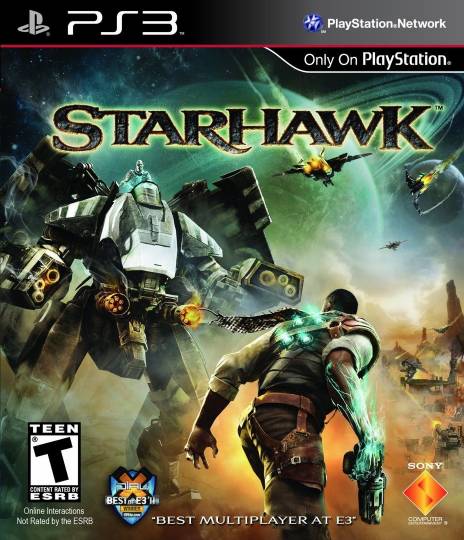
As a longtime fan of the Halo series, I’ve enjoyed seeing its evolution over the years. Each game builds from the strong foundation of the “golden triangle” (guns, grenades, melee) and sandbox combat design (vehicles, enemy AI interactions, wide open levels, physics, etc.) From there, several games in the series have experimented with various new player abilities. For instance, Halo 2 and 3 dabbled with dual wielding, and later entries added sprinting and clambering.
I’m particularly fascinated by the various attempts to add a core fourth element to the “golden triangle”. Halo 3 introduced deployable equipment such as the bubble shield and gravity lift. Halo Reach and 4 reconceived these as armor abilities, granting new abilities like a jet pack, dash, or projectable hologram. Halo 5 subsequently rolled several of them back into the player’s default loadout.
While these are all strong mechanics that interact well with the other systems in Halo, I would argue that they failed to ascend to “core” abilities. As a tradeoff for their power, they have significant limitations. They have long cooldowns, restricted ammo, or are extremely situational in their use. They introduce little spikes of excitement and tension, but don’t fundamentally alter the dynamics of Halo combat.
Given this history, I was delighted to discover the grappleshot in Halo Infinite. This new piece of equipment fundamentally reshaped my combat experience while also perfectly supporting the “golden triangle” core identity.
The sheer numbers of interesting uses for the grappleshot (enumerated below) is impressive. A mechanic with so many possibilities affords ample opportunity for player choice and skill expression. What’s more, each of these ideas came from a delightful moment of sudden insight from my own playthrough. None of these situations are didactically tutorialized, but come about through playful experimentation and discovery.

1. Advancing
You can use the grappleshot to launch yourself towards the enemy’s general position. This is useful for quickly crossing open terrain with little cover, or when you have short-range weapons equipped and it’s advantageous to get in close. It’s also just an exciting opening move into any combat encounter when you’ve got full shields and you’re feeling confident.
2. Retreating
On the other hand, if your current position is getting too hot and your shields are getting low, you can use the grappleshot to quickly retreat to safety. You can slightly curve your approach while reeling in, allowing you to grapple around corners and finesse which side of cover you’ll land on. Flying out at the last moment is significantly more entertaining than the traditional passive Halo option of “hunker down in nearby cover until your shields recover”.
3. Flanking (Traditional)
Using the layout to flank around an entrenched enemy position is one of the core elements of shooter combat design. The mobility of the grappleshot makes it easier to take advantage of these routes, and even opens up new possibilities such as…
4. Flanking (Vertical)
In addition to the left and right flanks, vertical traversal opens up the option of flanking from above or below. The combat layouts in Halo Infinite support this mechanic with vertically stacked layouts, upper catwalks, and porous multi-story buildings.
5. Target Prioritization
Another core element of shooter combat is target prioritization; the player must identify which high-threat enemies must be dealt with first in any given situation. In Halo Infinite, this frequently means snipers or turrets in high overwatch positions. The grappleshot allows you to close the gap on these priority targets and focus them down first.
6. Taking the High Ground
As a corollary to singling out enemies in advantageous positions, you can also use the grappleshot to reach and exploit those positions yourself. Shoot from the enemy’s own sniper nest, fight from their fortifications, or commandeer their turret.
7. Fast Falling
By contrast, you may find yourself in a situation where you’re high up but it would be advantageous to take cover on the ground. Simply jumping and falling from gravity may expose you to enemy fire in midair, but grappling downwards gives you the option to “fast fall” (to steal a term from fighting games) to safety.
8. Dodging Shots
An underappreciated element of what makes Halo’s core combat so great are the big slow energy projectiles that many of the Covenant weapons fire. Strafing and dodging these shots is a joyful skill expression, reminiscent of old-school shooters like Doom. Weaving between these shots while flying around on the grappleshot adds another layer of enjoyment.

9. Grapple → Melee
Grappling an enemy works the same way as grappling any other surface. You fly directly towards them, and automatically melee them on arrival. Tougher enemies will assume a defensive stance while you’re midair and block the hit. Later in the game, you can unlock upgrades to stun the grappled target (if they’re unshielded) and deliver a shockwave blast on arrival.
10. Grapple → Shotgun
Alternatively to #9, if you have a shotgun, you can opt to shoot them point-blank on arrival instead. However, firing your gun will break the tether, which creates a delicious tension of trying to hold your shot until the very last moment.
11. Rear Weak Points
Hunters and Shield Jackals are enemies with strong defenses in the front, but are vulnerable to being shot from behind. You can use the grappleshot to quickly reposition behind them and exploit this weakness. In practice, however, this tactic is outclassed by other abilities. It’s easier to get behind Hunters with the thruster ability, and hitting a Jackal’s shield directly with the grappleshot makes them lower their guard anyways.

12. Hijacking
Options for dealing with vehicles while on-foot have traditionally been fairly limited in the Halo series. You can try to hijack them, but more often than not you’ll get run over in the attempt. The grappleshot evens the odds by allowing you to latch onto an enemy vehicle, fly towards it, and automatically hijack it. The skill expression comes from needing to get into grapple range, and the enemy AI tends to compensate by strategically keeping their distance.
13. Grabbing Weapons
Grappling a gun on the ground will pull it towards you and make it your current active weapon. While in theory this is an interesting option when you’re out of ammo, in practice I didn’t use this mechanic much. It’s far easier to reposition yourself than to precision target a tiny pickup on the ground.
14. Grabbing Fusion Coils
Halo Infinite has small throwable explosive barrels called fusion coils. You can walk over and pick them up manually, but grappling them into your hands mid-combat is far more interesting and dynamic. Of course, the risk tradeoff is that an enemy might shoot the fusion coil while it’s in hand or flying towards you.
15. Intercepting Fusion Coils
Brutes (and enemy players in MP) will pick up and throw fusion coils at you. If you’re quick on the draw, you can grapple them out of midair and throw them back. As a systems designer myself, I’m particularly impressed by this wonderful dynamic interaction of modular game mechanics.
16. Opening the Gates
A lot of the open world gameplay in Halo Infinite involves smashing through Banished outposts. These are typically fortified with high outer walls, which adds a complication when you roll up with a Warthog full of marines. The solution is to park your ride, grappleshot over the walls, and open up the gates from inside. Overcoming this kind of mid-combat obstacle helps the player feel like the hero of the battle.
17. Hidden Routes
If #16 is too direct for your playstyle, Banished bases usually have hidden entrances as well. Use the grappleshot to poke around hard-to-reach areas around the outside of the base, and you’ll frequently find an underground tunnel leading inside. This is another clever opportunity to make the player feel smart.
18. Overshooting
If you grapple onto the edge of a surface, then steer away from that surface in midair, you can overshoot your grapple point and launch yourself into the air. This is useful for many of the previously mentioned applications: to retreat even further out of combat (#2), to flank from midair (#4), to get into hijacking range of an enemy vehicle (#12).
19. Climbing
Halo Infinite’s open world features tall mountains and massive Forerunner structures. While most areas are connected by winding roads, it’s great fun to take the direct route and scale the sheer cliffs with the grappleshot. Carefully scanning for toeholds and planning your climbing route adds some quiet downtime to an otherwise frenetic game. Once you unlock the “quickshot” upgrade (reducing the cooldown by 40%), you can fly up any vertical surface by repeatedly overshooting and regrappling in midair.

20. Fast Traversal
Since the open world is built to vehicle scale, traversing long distances on foot can be fairly tedious. If you happen to find yourself between objectives without a ride, you still have the option of grappling forward horizontally across the terrain, essentially the non-combat version of advancing (#1). Traversing this way is reasonably fast, so foot traversal never feels like a drag.
21. Fall Recovery
One of the perils of flying through the air on the grappleshot is that you might accidentally fling yourself off a cliff. Thankfully, the problem is also the solution. Spinning around and just barely catching the edge before you fall into the void is an exciting and memorable experience. Failing to do so is also entertaining!
22. Aesthetic Beauty
Finally, the best reason to use the grappleshot is just for the beautiful aesthetic experience of it. C. Thi Nguyen notes how, in a broad sense, games (such as rock climbing) are optimized to create such experiences:
“In my normal life moving around the world, I get to feel graceful once a week, but rock climbing […] tunes you into the part of the activity that has that feeling. And when you rock climb… […] it’s built to constantly call out of you that incredible experience of delicate, graceful, perfect motion.”
The repeated sensation of beautiful movement kept me engaged and delighted with Halo Infinite all the way to the end. The combat and the traversal were so sublime that I was intrinsically motivated to clear out base after base, simply enjoying playing around in this sandbox for a while.

While I’ve enumerated these 22 uses to make the case that the grappleshot is a great game mechanic, one could reasonably use this as evidence to claim that the grappleshot is overpowered. It certainly outclasses all the other equipment (threat sensor, drop wall, thruster) that Halo Infinite tries to put in the same control slot. Perhaps an ability that is useful in almost every situation is simply unbalanced.
Paradoxically, “good design” heuristics like balance can get in the way of good design. Frank Lantz invites us to consider another “unbalanced” weapon:
“Look at the AWP, the signature 1-hit-kill weapon in Counter-Strike. It’s completely unbalanced. Any sensible game designer would have rejected it. Luckily for us, Counter-Strike wasn’t made by sensible designers, it was made by unreasonable people who kept this unbalanced ingredient and evolved the rest of the game around it.”
The grappleshot is “unbalanced” in the sense that it warps the design space around it. Rather than reject this uncomfortable distortion, Halo Infinite’s whole design rises to meet it. The final product is a rare accomplishment: a series reboot that feels both classic and revitalized.




